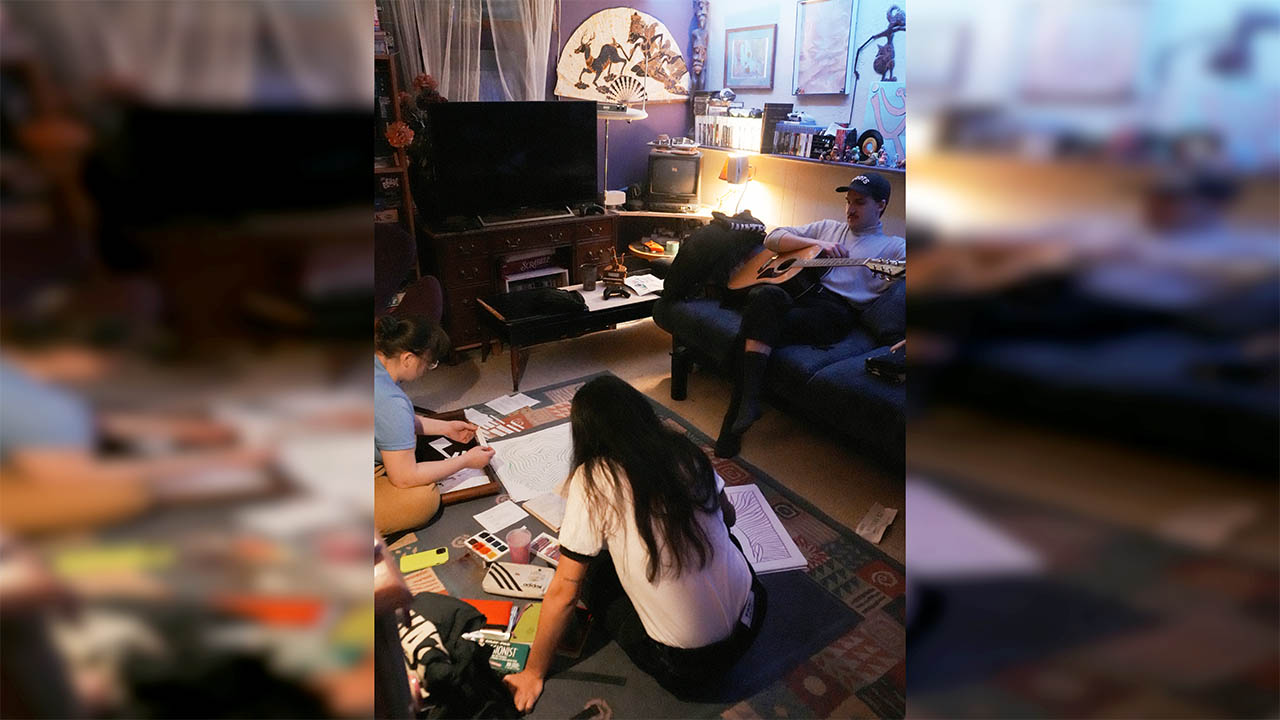Revolutionary arts incubator reshapes funding models for up-and-coming artists
 CREDIT: LLIAM BUCKLEY
CREDIT: LLIAM BUCKLEYA Fanshawe grad is helping pave the way for new artists.
Fanshawe Music Industry Arts (MIA) graduate Lliam Buckley has announced that his company, Corduroy Earth, is ramping up an arts incubator in London. He plans to do this through his Corduroy Colab program after receiving a $40,000 investment from Tech Alliance.
He introduced the first group of artists for his Corduroy Colab program, an accelerator for the arts specializing in music. With this initiative, Buckley intends to support the arts while giving up-and-coming local artists fairer access to the workforce.
“This is focused on reinforcing the arts and music industry by creating more equitable economic structures for them,” Buckley said. “It just makes sense to use the funding for that.”
He said they are looking at innovating the model for funding the arts. Buckley noted that the economics of the art industry right now are “very broken.”
“It is difficult for an artist to get paid just to create things. Artists are usually paid after they have built up a fan base,” Buckley said.
Buckley wants to quit that model, stating that it is the “key piece of the equation.” He said that to understand how the arts and music industry works, they first had to understand and research the traditional models for funding art.
“In the 1960s and 70s, we had the record label model. Even going back 50 years, record labels were good at paying artists just to create something,” Buckley said. “Essentially, if a record label thought you had potential, they would invest in you.”
He said they used to give these artists funding advances that were low-risk loans against their earnings. After the label had recouped those funds, they might start to profit from some of that investment in the artist and then be able to invest that in more art. Buckley said that the funding model received some criticism.
“Some say it was exploitative as it tried to own and control the artist’s career. It did not allow them to be authentic in who they were and the art they wanted to create,” Buckley said.
Buckley added that the model was effective at creating that funding upfront. In the 1990s, much of the media funding disappeared because of the Internet.
“You have a digital file that can be copied and pasted by anyone with an unlimited supply. That reduced the value of the art,” Buckley said.
He said that during those times in the arts and music industry, few record labels had funds to take risks on artists. He added that nowadays, artists have to market and figure out how to record themselves.
“They have to do everything themselves to fund everything, and it could take three, four, or five years of doing that before they have built up a fanbase,” Buckley said.
Even though this new model gives the artists more control than when they were with a label, it is a lot more difficult because they do all that on their own.
“We are expecting artists to now just be independent and good on their own while they do not even know if they would make some of that back,” Buckley said.
Buckley said they want to bring everyone together, not only the artist but also different resources within the city.
“People could support artists by giving them a studio space, a storefront where they can sell their merch, or something like that,” Buckley said. “It is about collaborating and pooling the various communities, businesses, and other things to support a small group of artists.”
He said they can now financially support these artists, give them marketing support, support on the recording side, and help with releases and video content.
“They will work with us for a year. Then, the next year, we will bring in another group and do it all over again,” Buckley said.
They will give artists funds in advance, just like a label would. Then, they will try to recoup that within the year. After that, the artist will split any future royalties, and Corduroy Earth will take a tiny percentage.
“We are going to take about 10 per cent of those royalties, which is much less than the 50 per cent the labels take out from artists,” Buckley said.
















